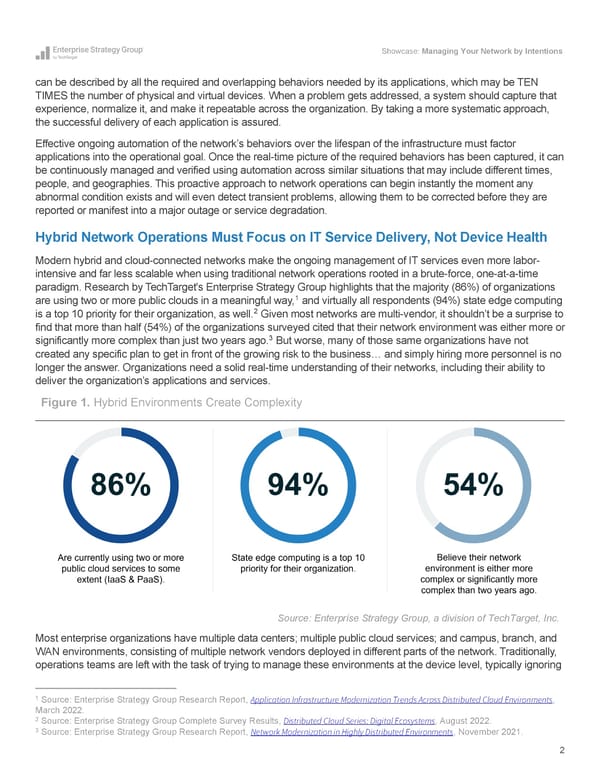Showcase: Managing Your Network by Intentions can be described by all the required and overlapping behaviors needed by its applications, which may be TEN TIMES the number of physical and virtual devices. When a problem gets addressed, a system should capture that experience, normalize it, and make it repeatable across the organization. By taking a more systematic approach, the successful delivery of each application is assured. Effective ongoing automation of the network’s behaviors over the lifespan of the infrastructure must factor applications into the operational goal. Once the real-time picture of the required behaviors has been captured, it can be continuously managed and verified using automation across similar situations that may include different times, people, and geographies. This proactive approach to network operations can begin instantly the moment any abnormal condition exists and will even detect transient problems, allowing them to be corrected before they are reported or manifest into a major outage or service degradation. Hybrid Network Operations Must Focus on IT Service Delivery, Not Device Health Modern hybrid and cloud-connected networks make the ongoing management of IT services even more labor- intensive and far less scalable when using traditional network operations rooted in a brute-force, one-at-a-time paradigm. Research by TechTarget's Enterprise Strategy Group highlights that the majority (86%) of organizations are using two or more public clouds in a meaningful way,1 and virtually all respondents (94%) state edge computing is a top 10 priority for their organization, as well.2 Given most networks are multi-vendor, it shouldn’t be a surprise to find that more than half (54%) of the organizations surveyed cited that their network environment was either more or significantly more complex than just two years ago.3 But worse, many of those same organizations have not created any specific plan to get in front of the growing risk to the business… and simply hiring more personnel is no longer the answer. Organizations need a solid real-time understanding of their networks, including their ability to deliver the organization’s applications and services. Figure 1. Hybrid Environments Create Complexity Source: Enterprise Strategy Group, a division of TechTarget, Inc. Most enterprise organizations have multiple data centers; multiple public cloud services; and campus, branch, and WAN environments, consisting of multiple network vendors deployed in different parts of the network. Traditionally, operations teams are left with the task of trying to manage these environments at the device level, typically ignoring 1 Source: Enterprise Strategy Group Research Report, Application Infrastructure Modernization Trends Across Distributed Cloud Environments, March 2022. 2 Source: Enterprise Strategy Group Complete Survey Results, Distributed Cloud Series: Digital Ecosystems, August 2022. 3 Source: Enterprise Strategy Group Research Report, Network Modernization in Highly Distributed Environments, November 2021. 2
 ESG Showcase NetBrain Network Intent Jan 2023 Page 1 Page 3
ESG Showcase NetBrain Network Intent Jan 2023 Page 1 Page 3